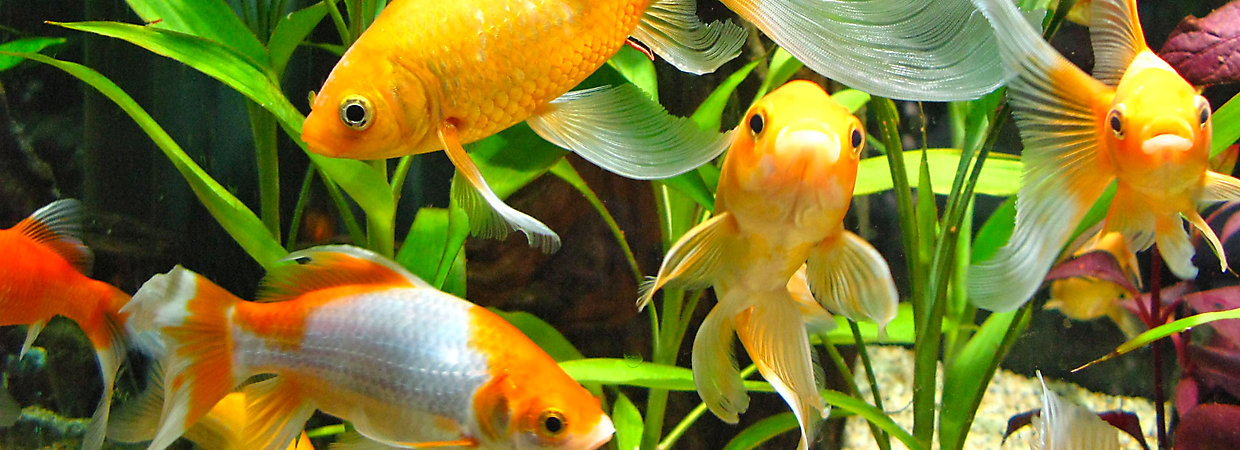Aytyapi Insights
Exploring the latest trends and updates in technology and lifestyle.
Aquarium Drama: Secrets Fish Use to Keep You on Your Toes
Dive into the surprising world of aquarium fish! Discover their clever tricks that keep you guessing and your tank captivating.
The Hidden Social Lives of Aquarium Fish: What They're Really Up To
Aquarium fish are often perceived as solitary creatures gliding through their aquatic homes, but the hidden social lives of aquarium fish tell a different story. In their underwater environments, fish engage in a variety of social behaviors that are crucial for their survival and well-being. For instance, many species display complex social hierarchies, with dominant individuals asserting their status over others. Behaviors such as schooling not only provide protection from predators but also facilitate communication among fish, as they respond to each other's movements and cues. This intricate dance among aquatic friends serves as a remarkable demonstration of their social intelligence.
Beyond mere schooling, aquarium fish also partake in activities that showcase their emotional and social bonds. Social interactions can be seen during feeding times, where fish engage in competitive displays, or during mating rituals that involve elaborate displays and courtship behaviors. Some species, like cichlids, even exhibit parental care, providing protection for their young and teaching them survival skills. This nurturing behavior highlights an emotional depth often underestimated in fish, inviting us to rethink what we know about their social lives. Observing these dynamics can not only enhance our appreciation for these creatures but also significantly improve our aquariums by creating environments that foster natural social interactions.

Why Do My Fish Hide? Unraveling the Secrets of Aquatic Behavior
One of the most common concerns for fish keepers is observing their fish hiding often. This behavior can stem from various factors, including stress, environmental changes, and the presence of tank mates. For instance, new fish added to the aquarium may feel threatened by established residents, prompting them to seek refuge in plants, decorations, or even under rocks. Furthermore, stressors such as poor water quality, inadequate tank size, and sudden changes in temperature can make fish retreat to safer areas of the tank. Recognizing these triggers is essential for maintaining a healthy aquatic environment.
Another vital aspect to consider is the natural instincts of fish. Many species are hiders by nature, using such behavior as a survival tactic to avoid predators. In the wild, fish often seek shelter in crevices or dense vegetation to stay safe. Therefore, providing adequate hiding spots in your aquarium setup is not only beneficial but also mimics their natural habitat. Consider incorporating caves, driftwood, and plants into your tank design to create a comfortable environment where fish can retreat when they feel the need. By understanding these behaviors, you can enhance your aquarium's ecosystem and promote a happy, healthy population.
Are Your Fish Playing Games? Exploring the Drama in Your Aquarium
Watching your aquarium can often feel like peering into a world of intrigue, where your fish seem to engage in endless activities that resemble games. From the playful movements of your clownfish to the competitive nature of guppies, these aquatic creatures exhibit behavior that can be both entertaining and dramatic. It's fascinating to observe how they interact with each other, from chasing and hiding to establishing territory. You might even notice some fish showcasing their personalities through what can only be described as a playful dance!
Understanding the drama in your aquarium goes beyond mere observation; it sheds light on the social dynamics of your aquatic pets. For instance, certain species thrive in schools, while others prefer solitary existence. This can lead to moments of tension and excitement as fish jostle for position or play 'hide and seek' in the plants and decorations. To enhance these interactions, consider introducing different types of hiding spots and visual barriers in your tank, allowing your fish to create their own drama and develop their social hierarchies.